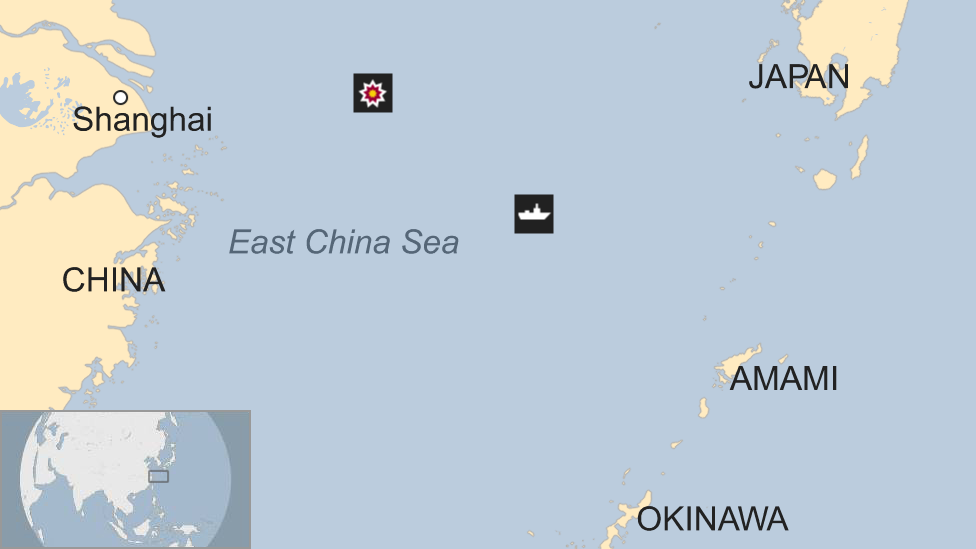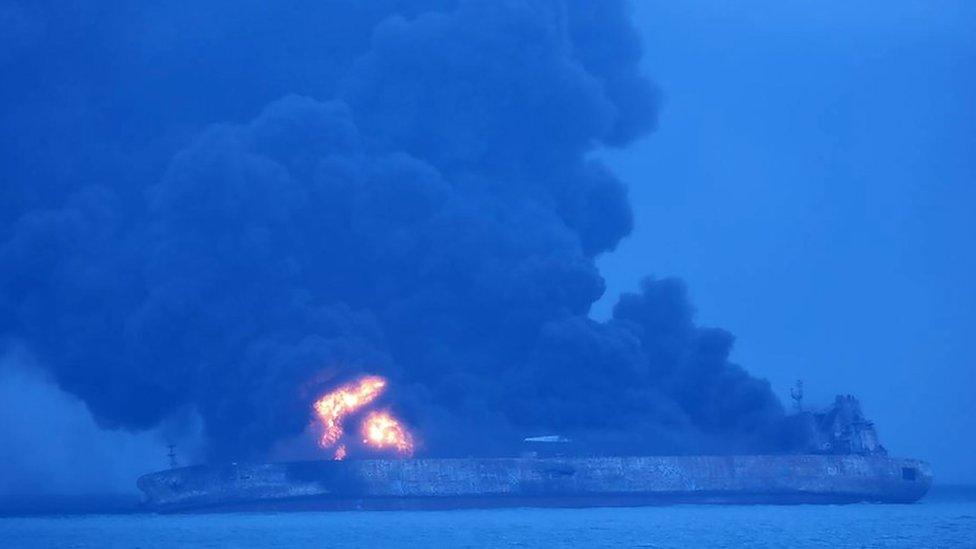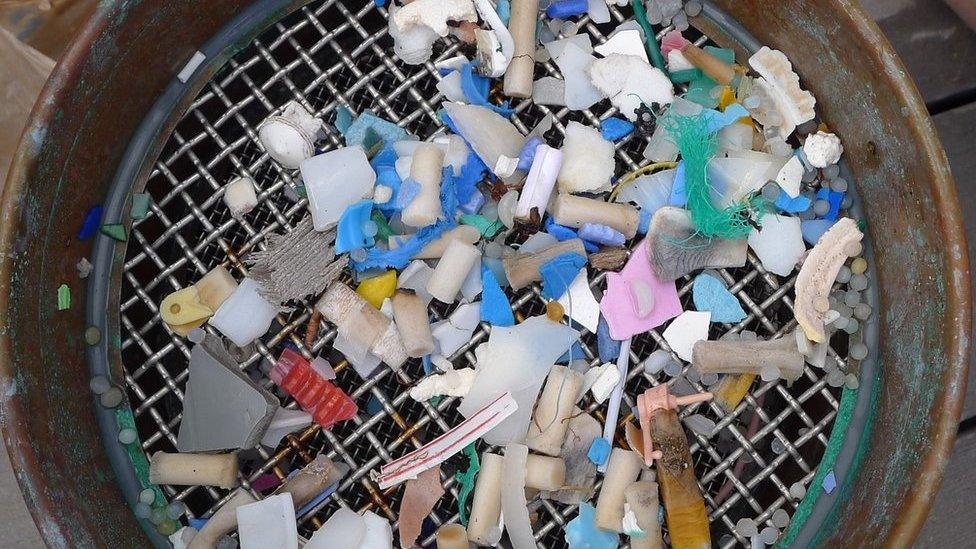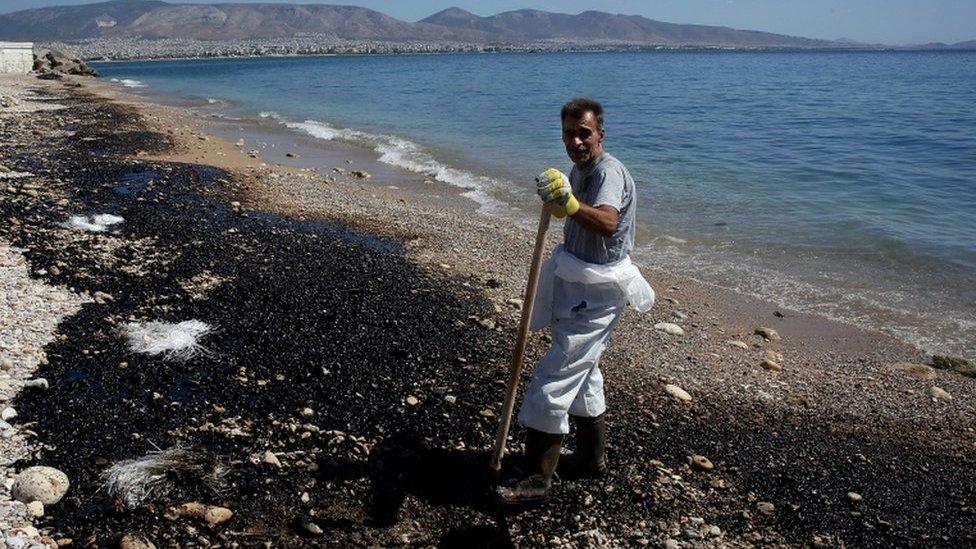China tanker fire: Bodies found as Sanchi burns, one week on
- Published
Salvage workers managed to board the burning oil tanker on Saturday
Salvage workers have managed to board a burning oil tanker off China's coast, recovering the bodies of two crewmen before smoke forced them to leave.
The Sanchi is still ablaze one week after a collision with a cargo ship.
The salvage team also recovered the ship's "black box" recording unit.
The bodies of only three of the 32 crewmen - 30 Iranians and two Bangladeshis - have so far been found. A team of Iranian commandos is joining the operation.
The tanker was sailing from Iran to South Korea at the time of the collision last Saturday evening.
Wind switch
The Chinese transport ministry said "four rescuers equipped with masks and bottles of oxygen were placed on the deck at the back of the Sanchi with the help of a crane.
"They discovered the bodies of two sailors in a lifeboat."
It added: "After recovering the black box, the rescuers tried to reach the living areas. But the temperature reached 89C (192F) and they could not enter."
The rescue mission lasted only about an hour as a change in wind made it too dangerous to remain in the thick toxic smoke, state news agency Xinhua reported.
Footage of the rescue work taken on Thursday
Chinese Foreign Minister Wang Yi told Iranian counterpart Mohammad Javad Zarif by phone that "as long as there is 1% hope, China will continue to make 100% effort".
Some 12 Iranian commandos are joining the operation but it is not known if they have yet reached the site.
Thirteen vessels - 10 Chinese, two Japanese and one South Korean - are taking part in the salvage operation but bad weather and the state of the Sanchi continue to hamper the work.
On Friday, a new explosion dashed hopes the fire might burn out.
The tanker has also been drifting south-eastwards from the collision point - 260km (160 miles) off Shanghai - towards the Japanese island of Amami Oshima.
The Japanese Coast Guard said on Friday it was about 290km off the island's coast and was drifting at about 2.2km/h.
But Chinese officials say no large oil spill has been detected so far.

A map showing the initial collision point and approximate location on Saturday morning
The Sanchi had on board 136,000 tonnes of condensate, which is an ultra-light version of crude oil.
The Panama-flagged vessel was bringing the condensate from Iran to South Korea when the collision with the Hong Kong-registered freighter CF Crystal, carrying grain from the US, happened in the East China Sea. The crewmen of the Crystal were all rescued.
The cause of the collision is still not known.
Condensate is very different from the black crude that is often seen in oil spills.
It is toxic, low in density and considerably more explosive than regular crude.
Condensate creates products such as jet fuel, petrol, diesel and heating fuel.
- Published7 January 2018

- Published16 August 2017

- Published14 September 2017
